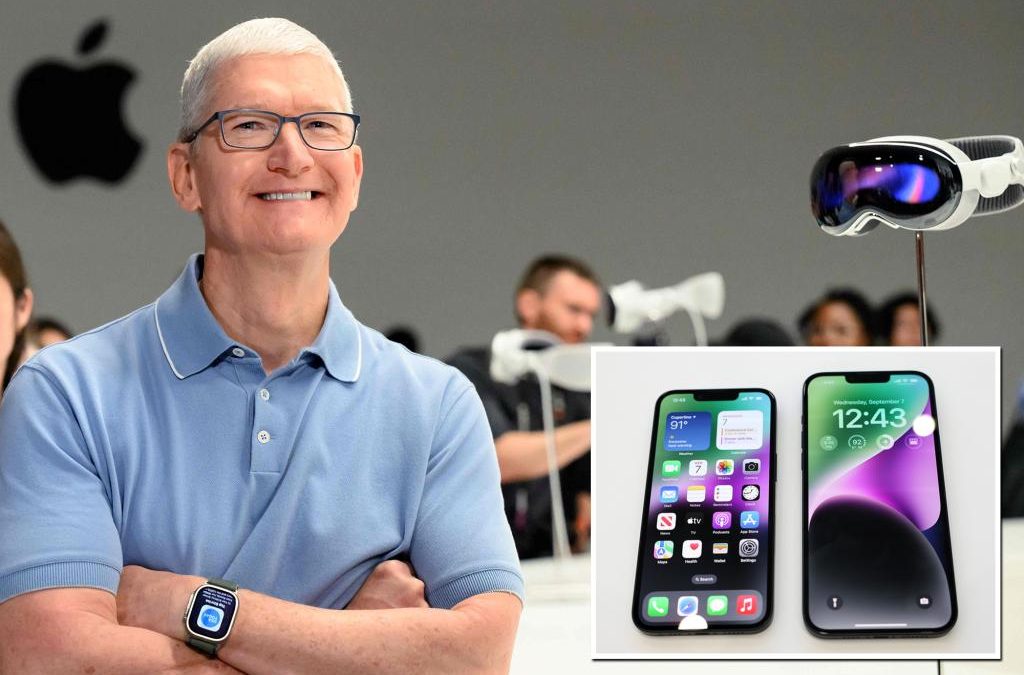Apple’s stay as the world’s only $3 trillion company was short-lived Friday — a day after the company reported its third consecutive quarter of declining sales due to weak iPhone demand.
Shares of the Cupertino, Calif.-based tech colossus were down by nearly 3.5% as of 10 a.m. Eastern time on Friday — — lowering its market cap to a still robust $2.92 trillion.
In the three-month period ended July 1 — Apple’s third quarter — it recorded a revenue of $81.8 billion, a 1.4% decline from Q2 and a year-over-year drop of 3%.
The tech giant’s Chief Financial Officer Luca Maestri said on a conference call on Thursday that Apple’s performance would be similar in its final quarter of the year.
If Maestri is correct, an additional drop would spell the largest downward streak Apple’s seen in two decades.
Shares of the California-based company had been up nearly 50% so far this year.

In June, Apple became the first company in history to hit a market capitalization of $3 trillion.
Apple is the highest-value company in the world by over $1 trillion.
Microsoft is in the No. 2 spot, and Saudi Arabian petroleum company is No. 3 with market caps of $2.4 trillion and $2.1 trillion, respectively.
In its earnings call, Apple CEO Tim Cook blamed “foreign exchange headwinds” on disappointing sales of Apple’s most famed device, the iPhone, as a stronger dollar has hurt the company’s revenue, which comes primarily from international countries.
Sales of the smartphone slipped 2.94% to $39.7 billion in the third quarter, just shy of the $39.8 billion analysts were expecting, according to Bloomberg.

Apple’s executives noted in the earnings call that the smartphone market will slow down in the US.
Earlier this week, cell-phone chipmaker and iPhone supplier Qualcomm reported that mobile device sales are weak, and it expects sales to range between $8.1 billion and $8.9 billion in the fiscal fourth quarter.
The midpoint of that range is well below the $8.79 billion average analyst estimate, Bloomberg reported, which sent Qualcomm shares slipping in its biggest intraday drop since 2020.
Executives said they expected the smartphone to perform better in the fiscal fourth quarter, but did not say how much.
Weaker-than-predicted iPhone sales were offset by subscription services like Apple TV+ — which how has 975 million paid subscribers, Cook noted.
Maestri added that Apple is “closely managing out spend,” noting that “operating expenses of $18.7 billion were at the low end of the guidance range we provided at the beginning of the year.”
Earlier this year, Apple conducted two rounds of cost-cutting layoffs that impacted hundreds of contractors and workers on the company’s retail development and preservation teams, which oversee construction and upkeep at the iPhone maker’s retail stores.
And despite those overseas headwinds, sales of the iPhone in China grew 8% year-over-year thanks to the country ridding of its “zero-COVID” strategy in late January.

Apple’s wearables, including its Apple Watch and AirPods, also did particularly well in China.
Demand for the iPhone 14 has waned as the company prepares to launch its iPhone 15 Pro and Pro Max, which promise to have larger screen displays than previous models, a titanium frame with thinner boarders around the screen and a faster processor.
Though a release date has yet to be announced, iPhones are usually debuted in early September, a few weeks before the fourth quarter ends.
The Post has reached out to Apple for comment.
Around the same time, the tech giant will also be releasing the Apple Watch Series 9 and the Apple Watch Ultra, which is expected to come equipped with a serious processor upgrade and is rumored to be available in pink, a possible response to the recent Barbie craze.
In addition, debatably Apple biggest upcoming product — the Vision Pro mixed-reality headset announced in June — is not yet in the hands of consumers.
The long-anticipated $3,500 mixed-reality headset is already running into major production headaches ahead of its launch early next year.
Apple was reportedly forced to “make drastic cuts” to its headset production targets because key manufacturing partners are struggling with its intricate design. The production woes have also forced Apple to delay development of a cheaper version of the headset.
Source




